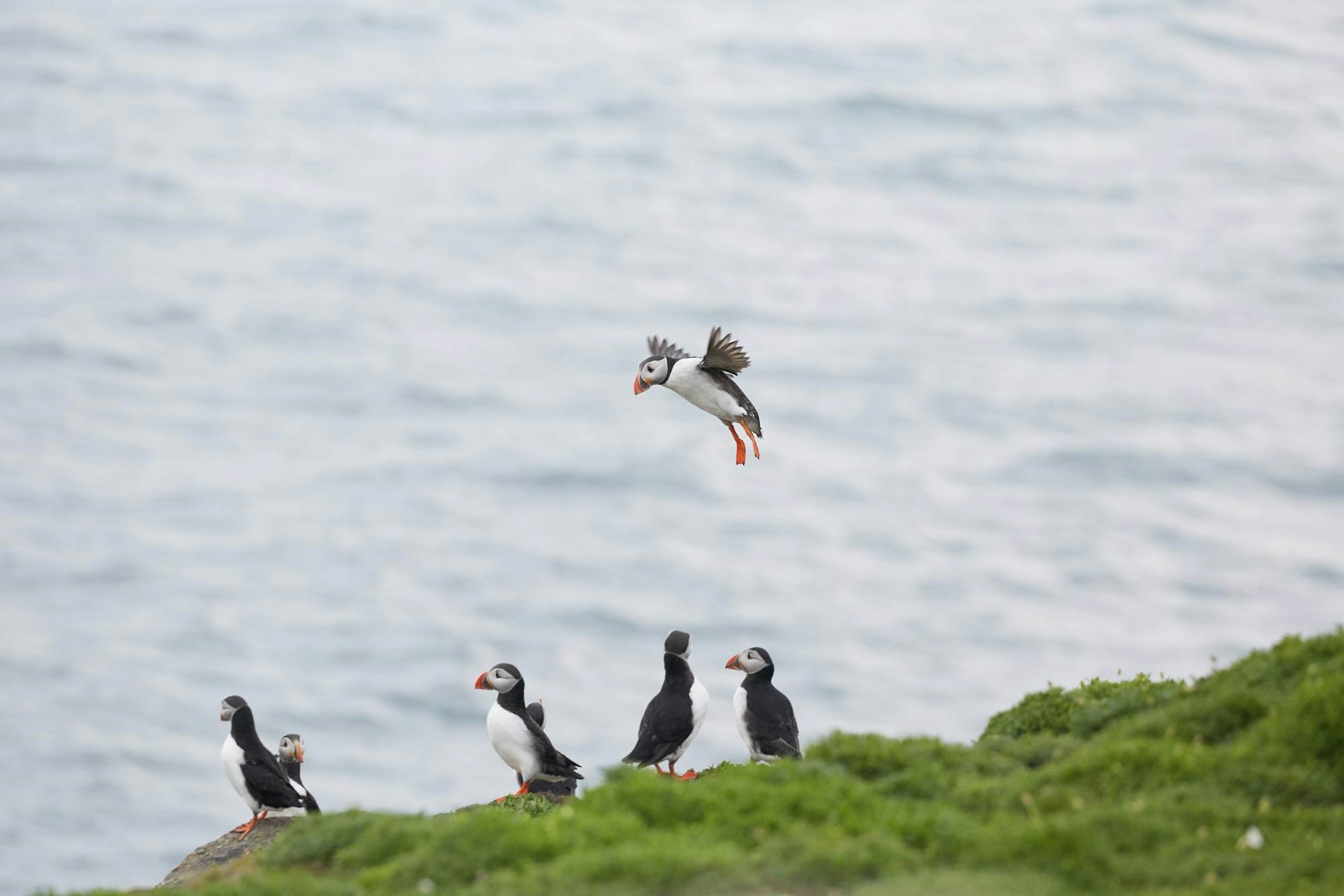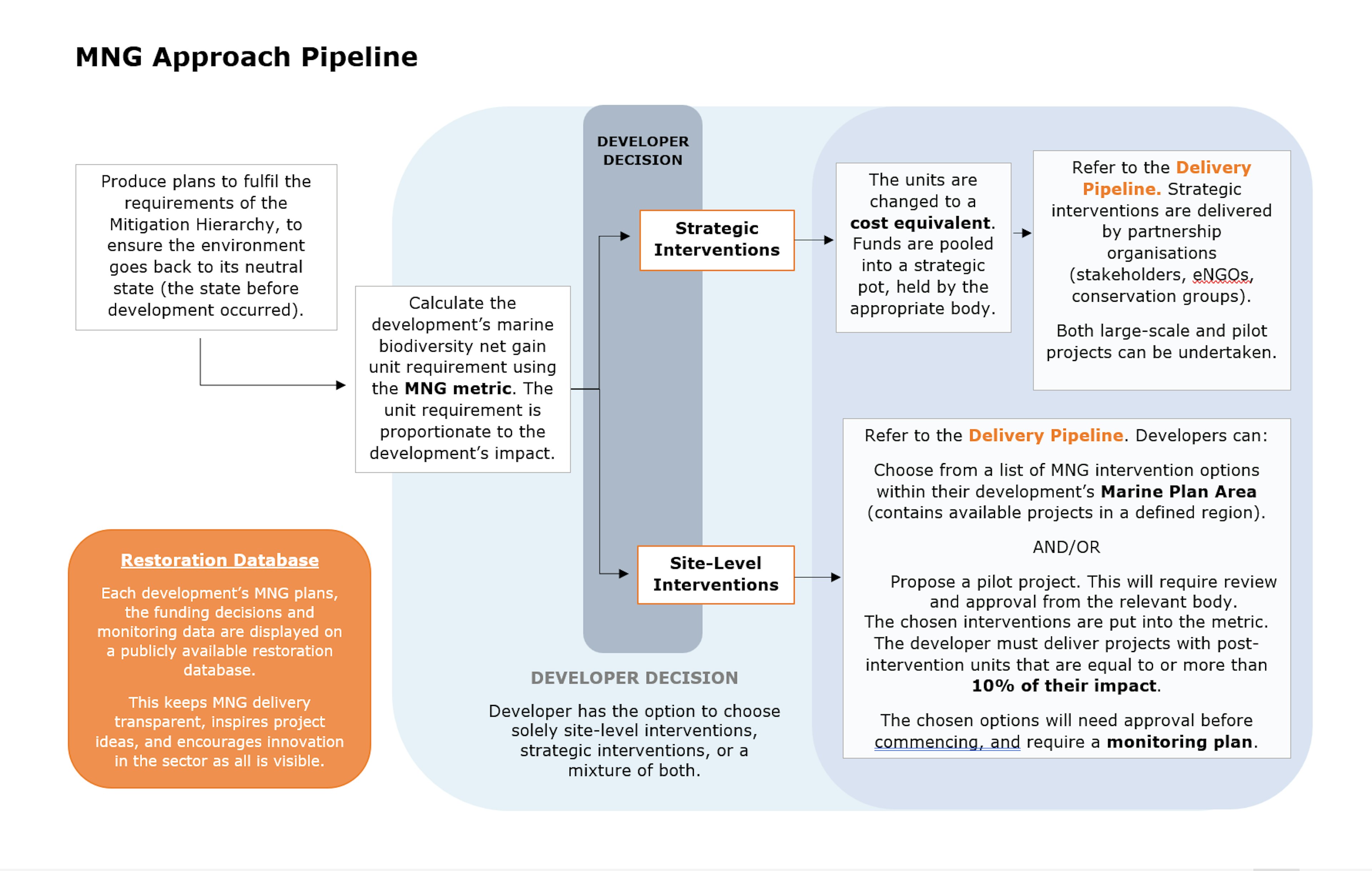
Creating a Marine Net Gain Project Pipeline for the Southern North Sea
Background
To deliver the British Energy Security Strategy and meet the UK’s ambitious targets for net zero, the numbers of marine developments are likely to significantly increase in the coming years, particularly in relation to offshore wind. Meanwhile, the UK’s waters are under pressure and require restoration. Defra’s 25 Year Environment Plan commits to putting the marine environment in recovery, and it is vital that nature recovery is embedded within development at sea. An important tool to meeting UK energy targets and delivering ocean recovery is the implementation of Marine Net Gain in policy. The UK Government intends to make Marine Net Gain a mandatory requirement for all new developments in English waters below the mean low water mark. It is an exciting and emerging area of marine policy.
Published in January 2024, Marine Futures Interns Jasmine and Sian have spent six months producing a project pipeline that gives an example of the potential steps a developer may have to follow to achieve Marine Net Gain requirements. The report also acts as a source of education on what Marine Net Gain may look like.
What is Marine Net Gain? How does it differ from Biodiversity Net Gain?
Net gain is an approach to development that aims to leave the natural environment in a measurably better state than beforehand. This means protecting, restoring, or creating environmental features that are of greater ecological value to wildlife, habitats and people than any losses associated with the original project (Defra, 2022). In 2018, the UK Government began consultations on Biodiversity Net Gain (BNG), and respondents communicated that they felt Net Gain should be extended to include marine alongside the terrestrial environments.
At present, BNG requirements state that the developer must:
- Provide a 10% net gain
- Prioritise on-site enhancements.
- After on-site enhancements, prioritise off-site enhancements followed by credits.
Following these three steps is called the biodiversity gain hierarchy. They may use a combination of these methods where on-site only is not viable. BNG uses habitats as a proxy for biodiversity, and therefore does not take species into account. The Defra metric formula used for BNG includes factors such as size, quality, and location of habitats.
Requirements for Marine Net Gain (MNG) are still being decided. Due to the marine environment’s dynamic nature, the potential biodiversity impacts associated with an offshore development do not always fall within the boundary of the development. Therefore, extra consideration must be taken, to ensure that highly mobile species such as fish, marine mammals and seabirds, are accounted for when measuring the biodiversity of a marine environment. In the most recent response to the consultation on the principles of marine net gain, the government confirmed that they will ‘include impacts on both habitats and species within the MNG assessment framework’ (December 2023).
What did they do?
Sian and Jasmine began the project by understanding what those in the marine sector would like to see from Marine Net Gain, to be able to design a project pipeline that is representative of the sector’s wants and needs. They achieved this by interviewing representatives from five different organisations with interests in the marine environment, including industry bodies, consultancies, statutory bodies, and environmental non-governmental organisations (eNGOs). These ‘Structured Conversations’, alongside research and hosting discussions with a variety of marine organisations, inputted into the design of a project pipeline, which is split into an ‘Approach’ and a ‘Delivery’ Pipeline. The report produced future recommendations on potential Marine Net Gain interventions that a developer could use as inspiration for their future Net Gain projects.

Active Interventions Vs Pressure Reductions
Active Interventions are those where additional management techniques are implemented. An example of this is seagrass replanting, where seagrass is relocated to a new area to help create or restore a seagrass meadow. Pressure Reductions are those where a known pressure is reduced or removed to allow an environment or species to recover. An example of this is the use of advanced mooring systems, where subsurface buoys raise moorings off the seabed, reducing dragging and impact on seagrass meadows. These techniques may be used separately or can be combined, as they are complimentary restoration techniques. A combination of both active interventions and pressure reductions are highlighted within the report.
Key Takeaways
• This report acts as a guide to developers and policy makers, to assist the implementation of MNG policy.
• Pipelines describing options for MNG delivery, as recommended by Jasmine and Sian, have been created. These pipelines encompass opinions and input from those working within a variety of marine sectors.
• There is a huge potential for innovation in creating MNG enhancements. This report highlights techniques that are already being investigated for both habitat and species recovery. However, further investigation (using pilot projects) into marine restoration should be undertaken to understand what will provide the best environmental outcomes.
• A key focus of the report is highlighting the importance of longevity, to ensure a development’s Net Gain continues into decommissioning and beyond, and sufficient monitoring takes place.
About Us
Jasmine and Sian were part of the 2023 intake of Marine Futures (East Coast) Interns working with The Crown Estate, Lincolnshire Wildlife Trust, Ørsted and Natural England. They completed projects on behalf of the partner organisations, one which required them to ‘Create a Marine Net Gain Project Pipeline for the Southern North Sea’.






